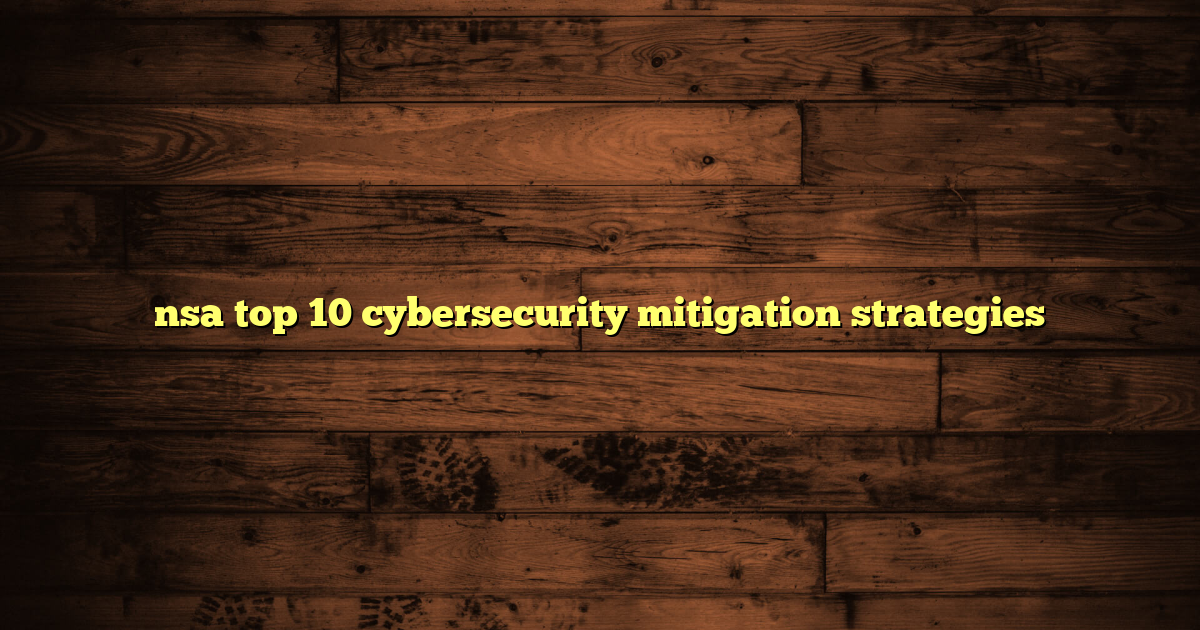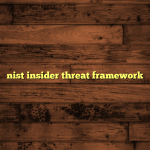nsa top 10 cybersecurity mitigation strategies
Table of Contents:
- Update and Upgrade Software Immediately
- Defend Privileges and Accounts
- Enforce Signed Software Execution Policies
- Exercise a System Recovery Plan
- Actively Manage Systems and Configurations
- Continuously Hunt for Network Intrusions
- Leverage Modern Hardware Security Features
- Segregate Networks Using Application-Aware Defenses
- Integrate Threat Reputation Services
- Transition to Multi-Factor Authentication
- Conclusion
- Additional Considerations: Zero Trust Architecture
- Implementing These Strategies
- FAQ
NSA’s Top 10 Cybersecurity Strategies: Your Shield in the Digital Age
Did you know that a single security lapse can bring an entire organization to its knees? The National Security Agency (NSA) understands the critical role of cybersecurity in today’s interconnected digital age. They have developed a set of ten cybersecurity strategies to help organizations stay safe from ever-changing cyber risks. They are crafted to be both proactive so comprehensive, complementing well-known frameworks, for instance, the NIST Cybersecurity Framework. Let’s dive into the NSA’s top ten strategies – they’re invaluable for any organization serious about strengthening its cyber defenses.
Update and Upgrade Software Immediately
The most effective defense against known weaknesses is regular software updates.
- Apply patches as soon as they’re released.
- Updating software prevents attackers from taking advantage of those well-known vulnerabilities that have been fixed in updated software.
Defend Privileges and Accounts
Protecting privileged accounts is non-negotiable.
- Use Privileged Access Management (PAM) tools.
- Implement tiered administrative access.
- You limit who gets access to sensitive systems and data.
This dramatically lowers the risk of unauthorized access and lateral movement in your networks.
Enforce Signed Software Execution Policies
It is essential that you guarantee only trusted applications including scripts run on your systems. This is possible by enforcing signed software execution policies. What does this mean?
- It prevents malicious software from running.
- It minimizes the risk of malware infections.
- It minimizes the risk of unauthorized access.
Exercise a System Recovery Plan
A thorough backup and recovery plan is vital for keeping data secure and ensuring operations continue. What does this entail?
- Back up critical data regularly.
- Test recovery processes to confirm they actually do work.
Should a cyberattack otherwise system failure happen, a well-thought-out recovery strategy assists to reduce downtime and data loss.
Actively Manage Systems and Configurations
How can you create a secure setting? By regularly maintaining network devices as well as software. This includes:
- Securing all systems configurations.
- Disabling unnecessary services or features.
Active management helps prevent weaknesses that arise from obsolete otherwise incorrectly set-up systems.
Continuously Hunt for Network Intrusions
A proactive approach is to look for and respond to intrusions. Use advanced threat detection tools and run routine network scans. What does this do? It helps discover possible threats before they cause trouble, as well as ongoing monitoring enables organizations to react rapidly to new threats.
Leverage Modern Hardware Security Features
Today’s hardware usually comes with complex security features that can enhance how safe a system is. Examples:
- Trusted Platform Modules (TPMs).
- Secure Boot.
They assist in preventing unwanted access together with ensuring systems start up safely. Taking advantage of this kind of feature substantially improves an organization’s security stance.
Segregate Networks Using Application-Aware Defenses
You block bad traffic but also you prevent movement within networks by implementing application-aware network defenses. Separate networks based on their applications so the services they support, ensuring vulnerable data and systems are kept away from less secure locations on the network.
Integrate Threat Reputation Services
You gain better threat intelligence by using threat reputation services from many sources. These services keep organizations informed about new threats along with recognized malicious actors, letting organizations adjust their defenses accordingly. Integrating those services into security systems enhances the ability to detect along with respond to threats.
Transition to Multi-Factor Authentication
Changing to multi-factor authentication (MFA) is a critical step to make accounts safer. MFA requires users to give at least two forms of verification to access content. This makes it far more difficult for attackers to break into accounts, regardless of whether they get passwords. It’s important for accounts with high-level permissions or access to private data.
Conclusion
The NSA’s top ten strategies give you a full approach to deal with then lower cyber risks. Organizations greatly improve their security by using the ten strategies and better defend themselves against developing risks. Each strategy plays a key role in creating a reliable cybersecurity framework, no matter whether updating software, securing privileged accounts, alternatively using modern hardware security features.
Additional Considerations: Zero Trust Architecture
Besides these strategies, the NSA stresses the importance of Zero Trust Architecture (ZTA). ZTA assumes all users so devices, no matter if inside or outside the network, are possible risks. By using ZTA, organizations control access to vulnerable resources that depend on user identity, device health, or other things. This minimizes the risk of unauthorized access along with movement in networks.
Implementing These Strategies
Putting the NSA’s top ten strategies into action takes ongoing, proactive effort. Regularly assess your security habits to ensure they agree with these strategies. This involves:
- Frequent Audits Plus Assessments – Do regular security audits to discover vulnerabilities and comply with those strategies.
- Training so Awareness – Consistently teach employees on cybersecurity best habits and the importance of this kind of strategy.
- Ongoing Monitoring – Use advanced tools to constantly monitor networks for possible threats and make sure that safety measures are working.
By embracing this kind of strategy while keeping a proactive method to cybersecurity, organizations greatly lower their chance of being targets of cyberattacks and maintain a secure cybersecurity stance as today’s threat changes.
FAQ
Why is software updating so important?
Updating software quickly prevents attackers from using known weaknesses that have already been fixed by the software providers.
What is privileged access management?
Privileged Access Management (PAM) limits who has access to delicate systems and data, lowering the risk of unauthorized access.
How does multi-factor authentication help?
Multi-factor authentication (MFA) requires at least two forms of verification, making it significantly harder for attackers to compromise your accounts.
Resources & References:
- https://www.centraleyes.com/8-best-cyber-risk-mitigation-tools/
- https://www.nsa.gov/Press-Room/Cybersecurity-Advisories-Guidance/?smdpage16681=3
- https://cybermagazine.com/articles/top-10-cybersecurity-strategies
- https://www.nsa.gov/Press-Room/Press-Releases-Statements/Press-Release-View/article/3833594/nsas-final-zero-trust-pillar-report-outlines-how-to-achieve-faster-threat-respo/
- https://www.cisa.gov/news-events/cybersecurity-advisories/aa24-317a





